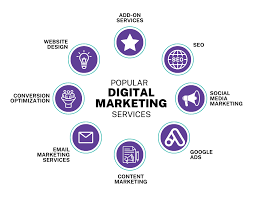Email marketing is one of the most effective and cost-efficient ways to reach your target audience and promote your brand. It involves sending commercial messages to a group of people via email, with the goal of building relationships, increasing sales, and driving traffic to your website.
One of the key advantages of email marketing is its ability to reach a large number of people at once. With over 3.9 billion active email users worldwide, it’s no surprise that businesses are increasingly turning to email as a primary marketing channel. Additionally, email marketing allows for targeted messaging based on factors such as demographics, interests, and behavior, making it a highly personalized form of communication.
Another benefit of email marketing is its affordability. Compared to other forms of advertising such as print or television ads, email marketing is relatively inexpensive. In fact, some email marketing platforms offer free plans for businesses with small subscriber lists.
Email marketing also offers measurable results through open rates, click-through rates (CTR), and conversion rates. These metrics allow businesses to track the success of their campaigns in real-time and make adjustments as needed.
However, there are also some challenges associated with email marketing. One major challenge is the issue of spam filters. Spam filters are designed to block unwanted emails from reaching users’ inboxes but can sometimes mistakenly flag legitimate emails as spam. To avoid this issue, it’s important for businesses to ensure that their emails are compliant with anti-spam laws and regulations.
Another challenge is the issue of unsubscribes. While unsubscribes are an inevitable part of any email campaign, they can be minimized by providing valuable content and giving subscribers control over their preferences.
Overall, despite these challenges, email marketing remains an effective way for businesses to reach their target audience and achieve their marketing goals. By providing relevant content and building strong relationships with subscribers, businesses can use email marketing to drive traffic, increase sales, and grow their brand awareness in a cost-effective way.
Maximizing Your Email Marketing Strategy: 6 Essential Tips
- Personalize your emails
- Keep your emails brief
- Include a call-to-action
- Design for mobile
- Test different subject lines
- Track results
Personalize your emails
Personalizing your emails is a crucial aspect of successful email marketing. By tailoring your messages to the individual recipient, you can increase engagement, build trust, and ultimately drive more conversions.
There are several ways to personalize your emails. One effective strategy is to use the recipient’s name in the subject line and greeting. This simple tactic can make the email feel more personal and less like a mass-produced message.
Another way to personalize your emails is by segmenting your email list based on factors such as demographics, interests, and behavior. This allows you to send targeted messages that are more likely to resonate with the recipient and result in higher click-through rates and conversions.
Personalization can also extend beyond just the content of the email. Consider using dynamic content that changes based on the recipient’s location or previous interactions with your brand. For example, if a customer has previously purchased a product from you, you could include personalized product recommendations in their next email.
However, it’s important to note that personalization should be used strategically and not overdone. Bombarding recipients with too much personal information or irrelevant details can come across as creepy or intrusive.
In summary, personalizing your emails is a powerful way to connect with your audience and drive results. By using tactics such as name personalization, segmentation, and dynamic content, businesses can create more engaging and effective email campaigns that resonate with their subscribers.
Keep your emails brief
When it comes to email marketing, keeping your emails brief is a crucial tip for success. With people receiving dozens, if not hundreds, of emails every day, it’s important to capture their attention quickly and concisely.
Long and wordy emails can be overwhelming and often lead to recipients losing interest before they even finish reading. By keeping your emails brief and to the point, you increase the chances of your message being read and understood.
In addition to improving readability, keeping your emails brief also helps with engagement. By focusing on one or two key points in each email, you can encourage recipients to take action more easily. Whether it’s clicking on a link or making a purchase, a clear call-to-action in a concise email is more likely to be effective than one buried in a lengthy message.
Another benefit of keeping your emails brief is that it allows for easier mobile optimization. With more than half of all emails being opened on mobile devices, it’s important to ensure that your messages are easy to read on smaller screens. Shorter emails with clear formatting and minimal images are more likely to display properly and be engaging on mobile devices.
Overall, keeping your emails brief is an essential tip for successful email marketing campaigns. By focusing on clear messaging and concise content, you can increase engagement, improve readability, and optimize for mobile devices – all of which will help drive success for your business.
Include a call-to-action
When it comes to email marketing, including a call-to-action (CTA) is crucial for achieving your desired results. A CTA is a button or link that encourages the recipient of your email to take a specific action, such as making a purchase, signing up for a newsletter, or visiting your website.
Without a clear and compelling CTA, your email may not have the impact you’re hoping for. A well-crafted CTA can increase click-through rates and conversions by giving your subscribers a clear direction on what to do next.
To create an effective CTA, it’s important to be clear and concise. Use action-oriented language that tells the recipient exactly what they should do next. For example, “Shop Now,” “Download Your Free Guide,” or “Sign Up Today.” Make sure the CTA stands out visually by using contrasting colors and bold text.
It’s also important to consider where in the email you place your CTA. Generally, it’s best to include it near the top of the email so that it’s visible without having to scroll down. However, you can also experiment with placing CTAs throughout the email to see what works best for your audience.
In summary, including a call-to-action in your emails is an essential component of successful email marketing campaigns. By creating clear and compelling CTAs that encourage recipients to take action, you can increase engagement and drive conversions for your business.
Design for mobile
With more and more people accessing their emails on mobile devices, it’s important for businesses to design their email marketing campaigns with mobile in mind. In fact, studies show that over 50% of all emails are opened on mobile devices, making it crucial for businesses to optimize their email designs for smaller screens.
One of the key considerations when designing for mobile is ensuring that the email is responsive. This means that the email will automatically adjust its layout and formatting based on the screen size of the device being used. A responsive design ensures that the email is easy to read and navigate on both desktop and mobile devices.
Another important consideration is font size. Text that may be easily readable on a desktop screen can become too small to read on a mobile device. It’s important to use larger font sizes (at least 14pt) and clear, legible fonts to ensure that your message is easily understood.
Additionally, businesses should consider using a single-column layout for their emails when designing for mobile. This helps to simplify the design and make it easier for users to navigate through the content.
Finally, it’s important to keep file sizes small when designing for mobile. Large images or videos can slow down load times and lead to frustration among users. By optimizing image sizes and keeping file sizes small, businesses can ensure that their emails load quickly and are easy to access on mobile devices.
In conclusion, designing for mobile is a crucial aspect of effective email marketing campaigns. By ensuring that emails are responsive, using larger font sizes, simplifying layouts, and optimizing file sizes, businesses can create engaging and effective emails that are accessible on any device.
Test different subject lines
One of the most important aspects of email marketing is crafting an attention-grabbing subject line. The subject line is the first thing a recipient sees when they receive an email, and it can determine whether or not they open it. That’s why testing different subject lines is a crucial tip for any email marketer.
Testing different subject lines involves sending out multiple versions of the same email with different subject lines to see which one performs best. This can be done by dividing your email list into two groups and sending each group a different version of the email. By tracking open rates and click-through rates, you can determine which subject line resonates best with your audience.
There are several factors to consider when testing subject lines. First, make sure your subject line accurately reflects the content of the email. Misleading or click-bait style subject lines may get more opens initially, but they can ultimately harm your brand reputation.
Secondly, keep in mind that shorter subject lines tend to perform better than longer ones. Aim for a length of around 50 characters or less.
Finally, don’t be afraid to get creative with your subject lines. Using humor, personalization, or curiosity can help your emails stand out in a crowded inbox.
In conclusion, testing different subject lines is a simple yet effective way to improve the performance of your email campaigns. By experimenting with different approaches and analyzing the results, you can create compelling subject lines that increase open rates and engage your audience.
Track results
Tracking results is a crucial aspect of any email marketing campaign. Without tracking, it’s impossible to know whether your emails are reaching the right people, resonating with your audience, and driving the desired results.
There are several key metrics that businesses should track when it comes to email marketing. These include open rates, click-through rates (CTR), conversion rates, and unsubscribe rates. By monitoring these metrics, businesses can gain valuable insights into the effectiveness of their campaigns and make data-driven decisions to improve their results.
Open rates indicate how many subscribers opened an email, while CTR measures how many clicked on a link within the email. Conversion rates track how many subscribers took a desired action such as making a purchase or filling out a form. Unsubscribe rates indicate how many subscribers opted out of future emails.
By analyzing these metrics, businesses can identify areas for improvement in their campaigns. For example, if open rates are low, it may be time to re-evaluate subject lines or sender names to make them more appealing to subscribers. If CTR is low, businesses may need to adjust the placement or wording of links within emails.
In addition to tracking these metrics, businesses should also consider using A/B testing to optimize their campaigns. A/B testing involves sending two versions of an email with slight variations (such as different subject lines or calls-to-action) to see which performs better. By testing different elements of their emails and analyzing the results, businesses can continually improve their campaigns over time.
In conclusion, tracking results is essential for any successful email marketing campaign. By monitoring key metrics and making data-driven decisions based on those metrics, businesses can optimize their campaigns for maximum effectiveness and achieve their marketing goals.



